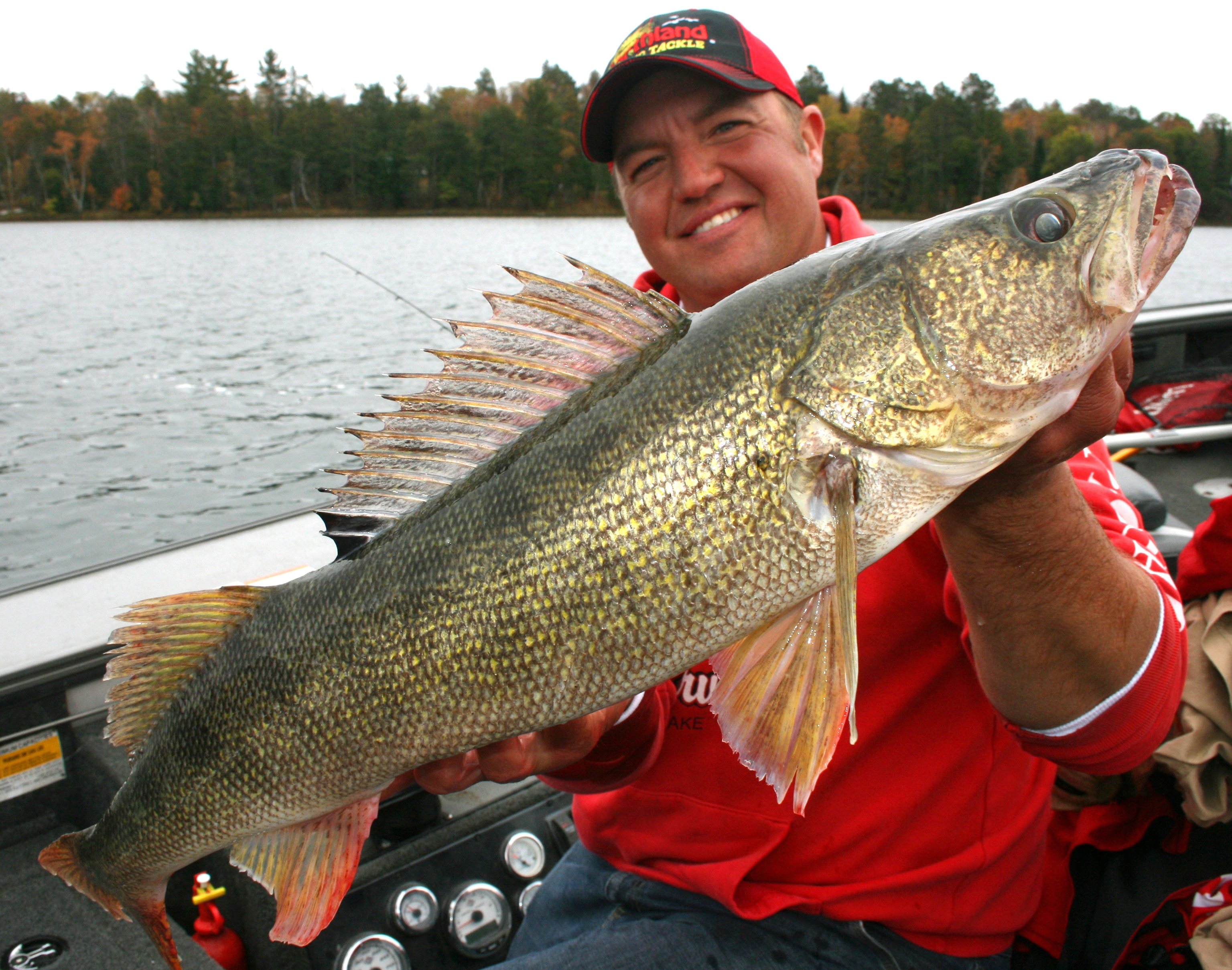
Walleye anglers today have a vast number of choices in the fishing lines they use, and while some types are best suited to certain situations and presentations, Team Northland‘s Tony Roach says braided line fills the bill for most of his fishing needs.
“To be frank,” he says, “I use Northland braid most of the time, with most presentations,” he says. “A braided line’s sensitivity is foremost, so whether I’m casting long distances, or pitching-and-ripping a jig, I like how it transmits everything to the rod-tip. I can easily feel every rock, weed tip, or strike, and because of its low stretch, the hook set is instantaneous.”
He always employs a fluorocarbon leader, attached to the mainline with a double-uni knot, for a couple of reasons. First, because it’s less visible and won’t spook wary fish in clear water, but also because it’s easier to break off if the jig becomes snagged. Another “must” is a fast-tip fishing rod. “You need something with a little give,” he says. “You don’t want to use a pool cue, otherwise you can rip the hook right out of the fish’s mouth.”
A 6-pound braid mainline, with a 10- to 12-pound fluoro leader is Roach’s standard set-up. “In lakes that are infested with zebra mussels, though, I upsize to the 8-pound braided line and up to a 14-pound leader,” he says. “It stands up much better to the abuse.”
Monofilament isn’t completely off the angler’s radar screen, however. “I like monofilament line when I’m fishing a slip bobber because it slides through the float so much easier,” he says. “It’s also the way to go when you’re pulling spinners and have the rods in holders. When a walleye strikes, mono allows the rod to load up more.”
Mono also outperforms braid in shallow water, or when walleyes tend to slash at a bait, he says. Its stretchability offers some forgiveness when the fish are non-committal.

